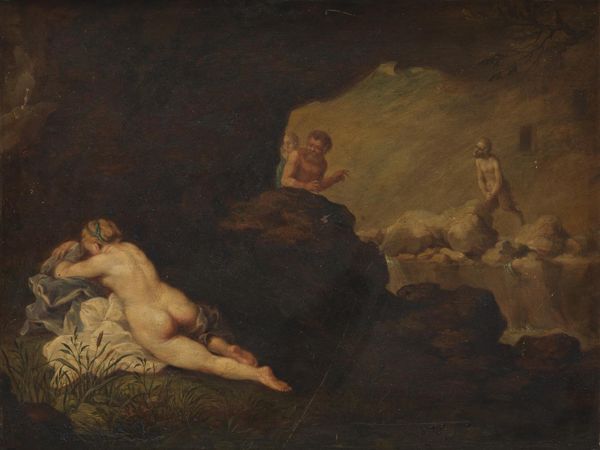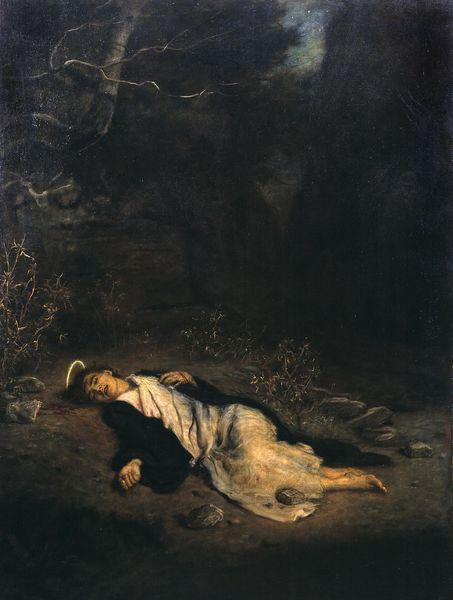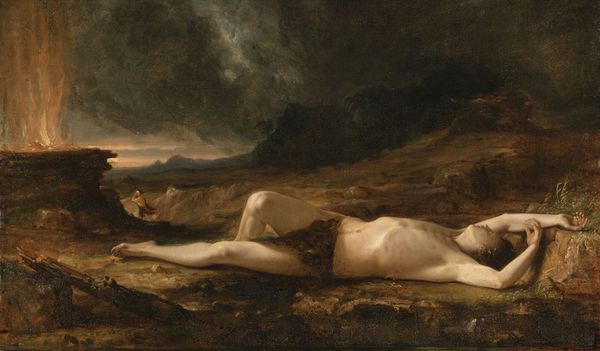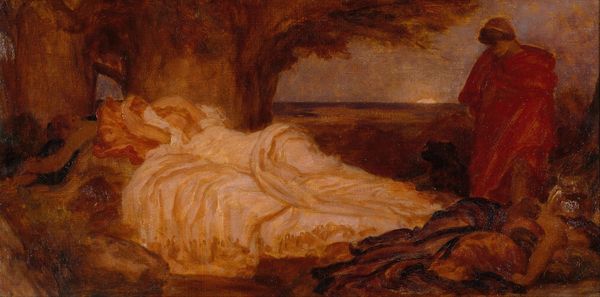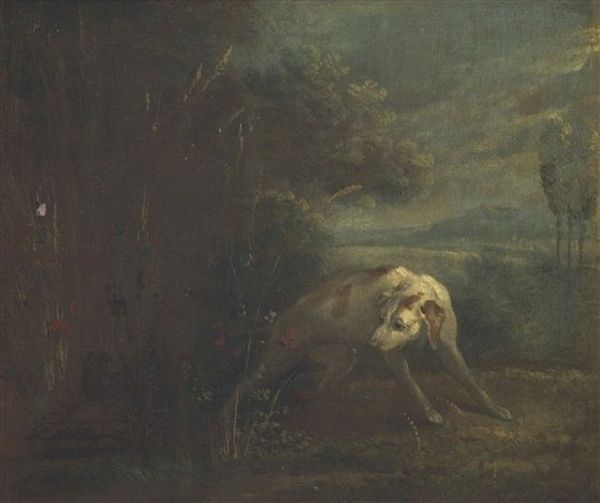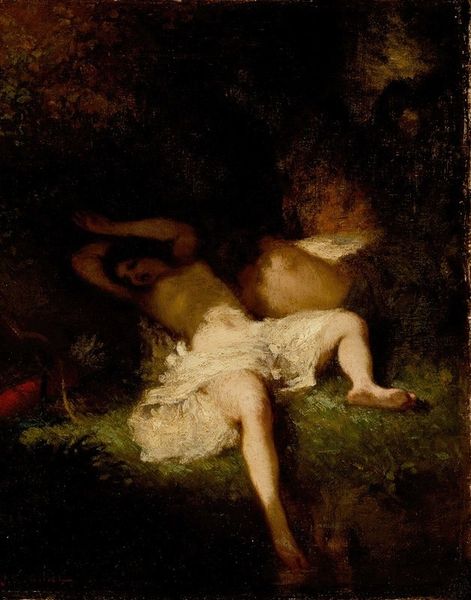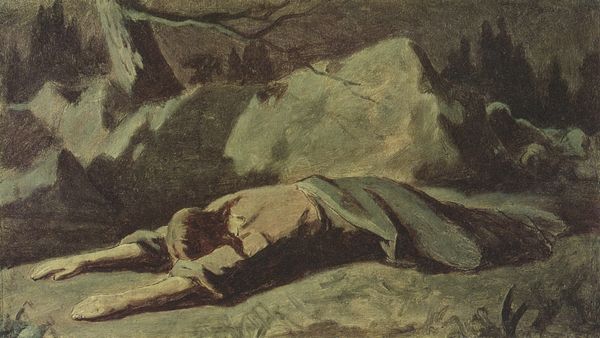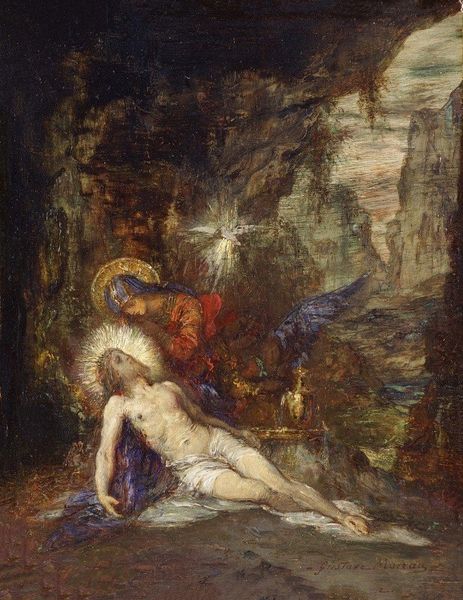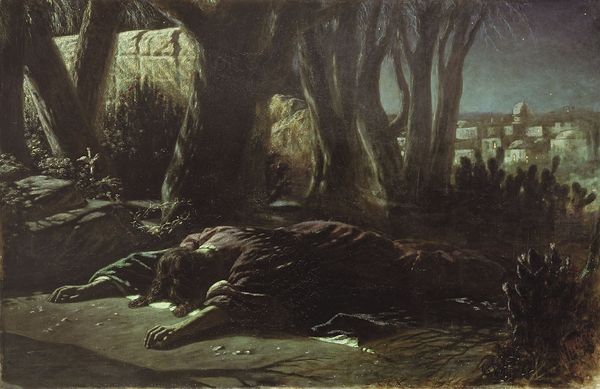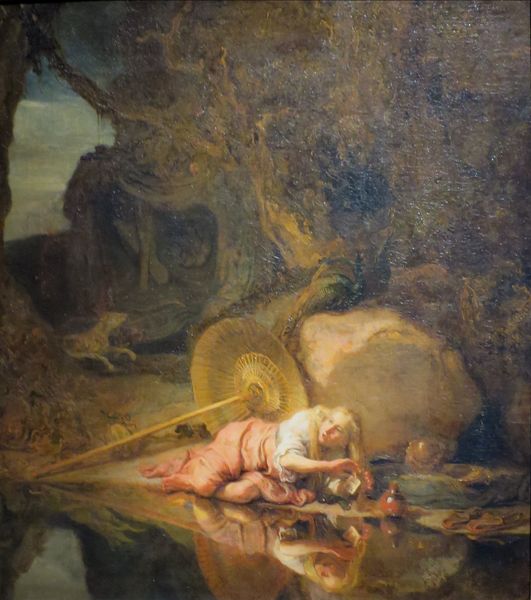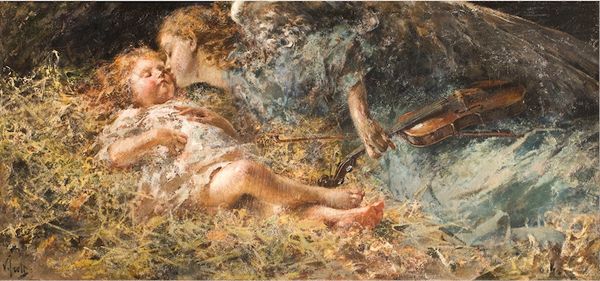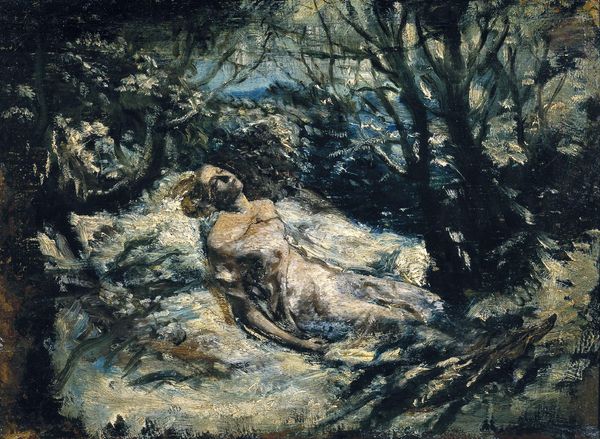
painting, oil-paint
#
narrative-art
#
painting
#
oil-paint
#
landscape
#
figuration
#
oil painting
#
romanticism
Copyright: Public domain
Editor: We’re looking at Eugène Delacroix’s "The Death of Ophelia," painted in 1838. The oil painting presents a somber and melancholic scene. What strikes me most is how passive and vulnerable Ophelia appears within the vast landscape. How do you interpret this work? Curator: The painting resonates powerfully when considered within the context of gendered representation in art history. Delacroix’s Ophelia, adrift in her final moments, becomes a symbol of female fragility and the tragic consequences of societal constraints. We have to ask, what commentary is Delacroix making about female identity in a patriarchal society? Editor: I see that. The darkness of the surrounding forest and water definitely adds to the feeling of being trapped. Curator: Exactly. The romanticized ideal of Ophelia’s madness and death often overlooks the violence inflicted upon her – both by Hamlet and by a society that silences female voices. It encourages us to examine how artistic depictions reinforce or challenge societal norms and to seek a deeper understanding of the narrative's power dynamics. Do you see any symbolism relating to female oppression here? Editor: Now that you mention it, the way the surrounding nature almost engulfs her feels like a visual metaphor for the overwhelming forces acting upon her. It feels…intentional. Curator: Precisely. The painting can be considered an indictment of the conditions that lead to Ophelia’s demise. Through visual analysis and contextual understanding, it enables us to critically assess representations of women in art and their relevance to contemporary discussions about gender equality and empowerment. Editor: That’s a perspective I hadn’t considered. It's interesting how much more there is when considering the social and historical implications within the painting. Thanks for this insight! Curator: Indeed. It’s by weaving these diverse narratives together that we uncover the deeper meaning and impact of the art.
Comments
No comments
Be the first to comment and join the conversation on the ultimate creative platform.
